At a glance
While HIV affects all people in the United States, some age groups are especially affected. In 2022, people aged 13 to 34 accounted for more than half (60%) of estimated new HIV infections. Get the latest data on HIV by age.

Fast facts
HIV affects some groups more than others. Social and structural issues—such as HIV stigma, homophobia, discrimination, poverty, and limited access to high-quality health care—influence health outcomes and continue to drive inequities.
HIV incidence
HIV incidence refers to the estimated number of new HIV infections in a given year.
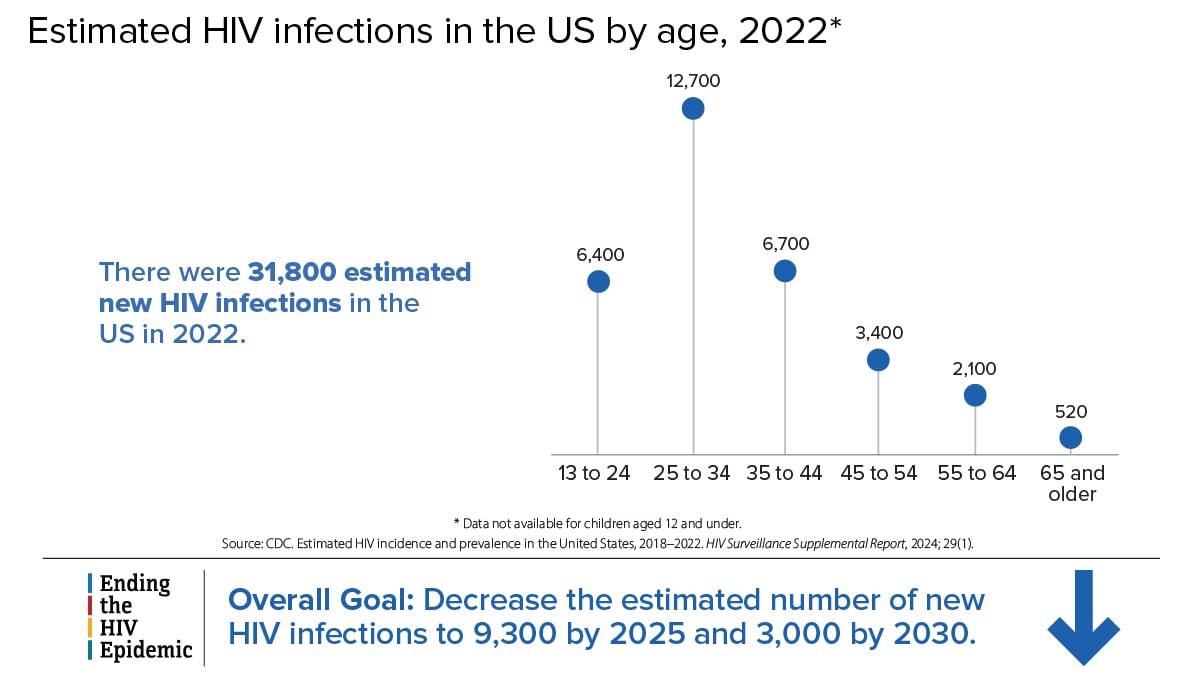
HIV diagnoses
HIV diagnoses refers to the number of people who received an HIV diagnosis during a given year.
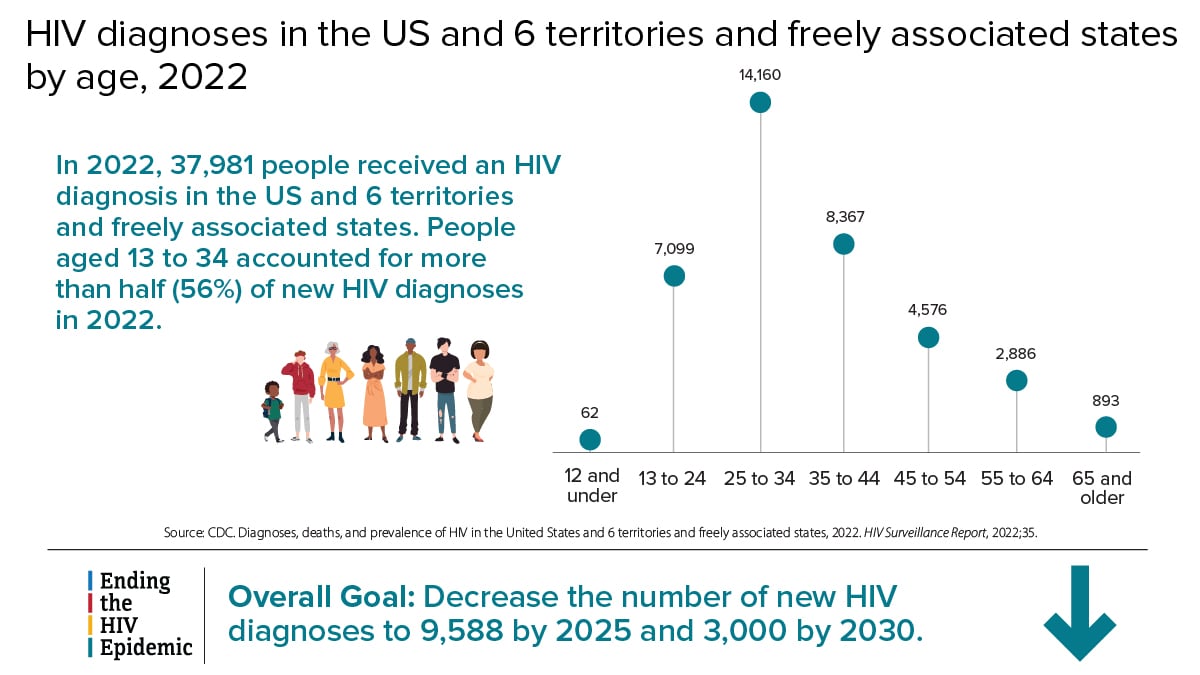
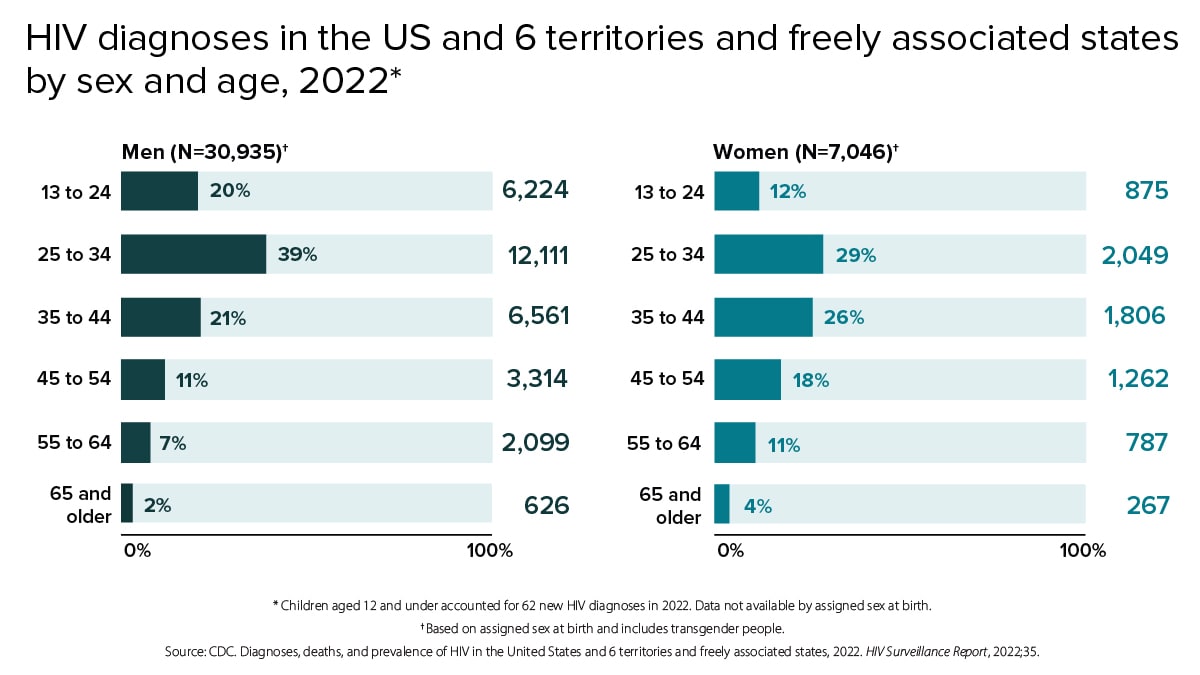
From 2018 to 2022, HIV diagnoses remained stable overall in the US and 6 territories and freely associated states. But trends varied for different age groups.

HIV diagnoses among children
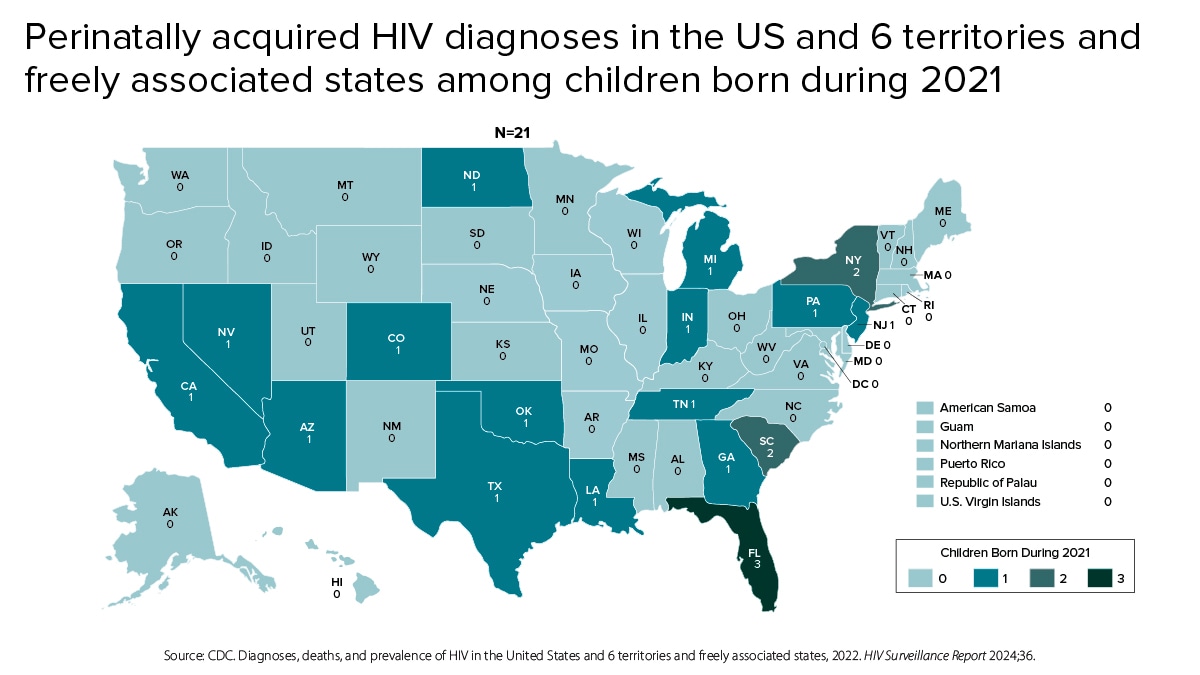
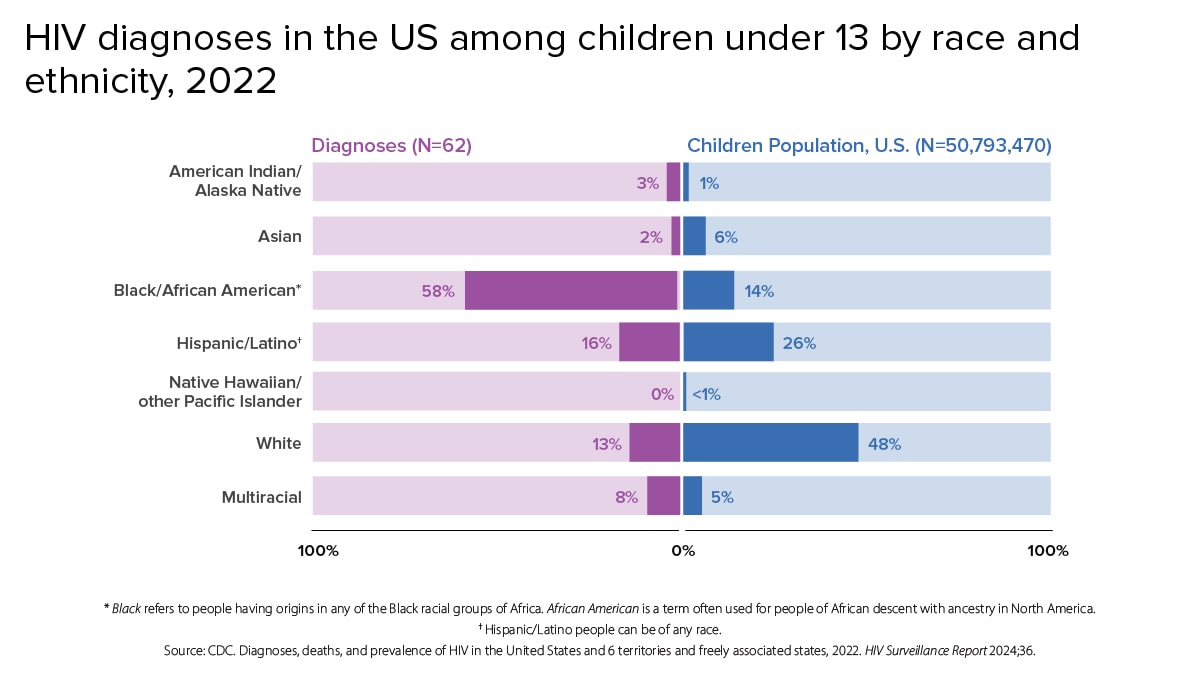
Knowledge of status
Knowledge of status refers to the estimated percentage of people with HIV who have received an HIV diagnosis.

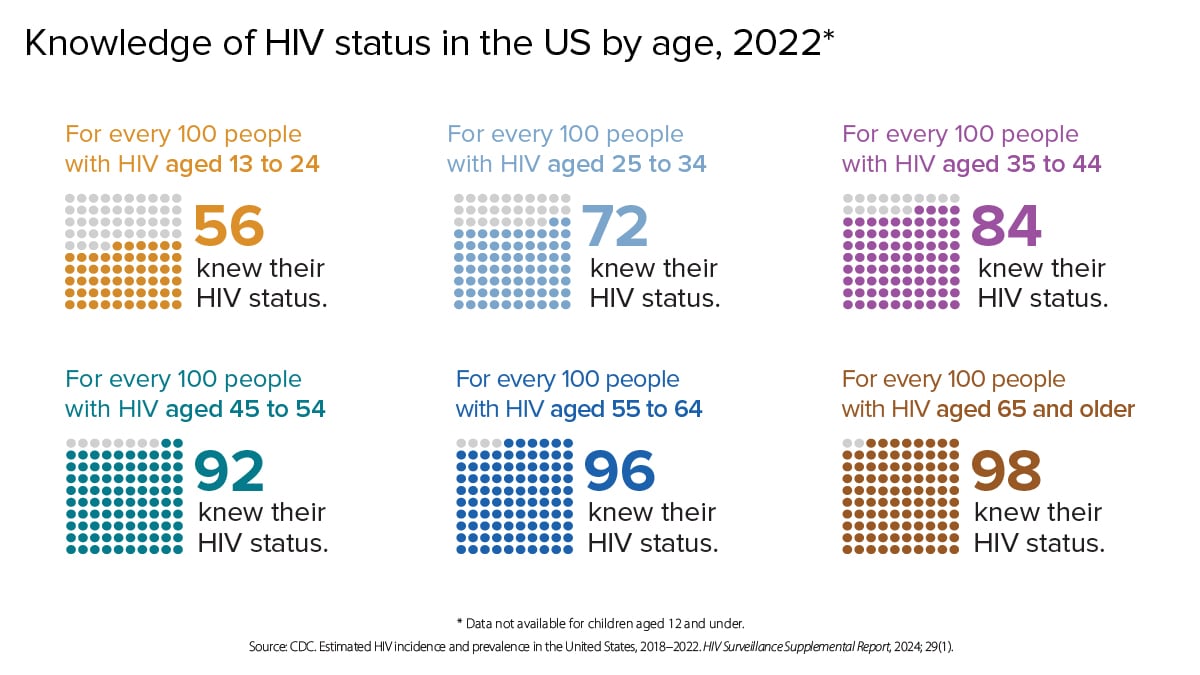
Behaviors associated with HIV transmission
The chances of getting or transmitting HIV varies widely depending on the type of exposure or behavior. Most commonly, people get or transmit HIV through anal or vaginal sex, or sharing needles, syringes, or other drug injection equipment—for example, cookers.
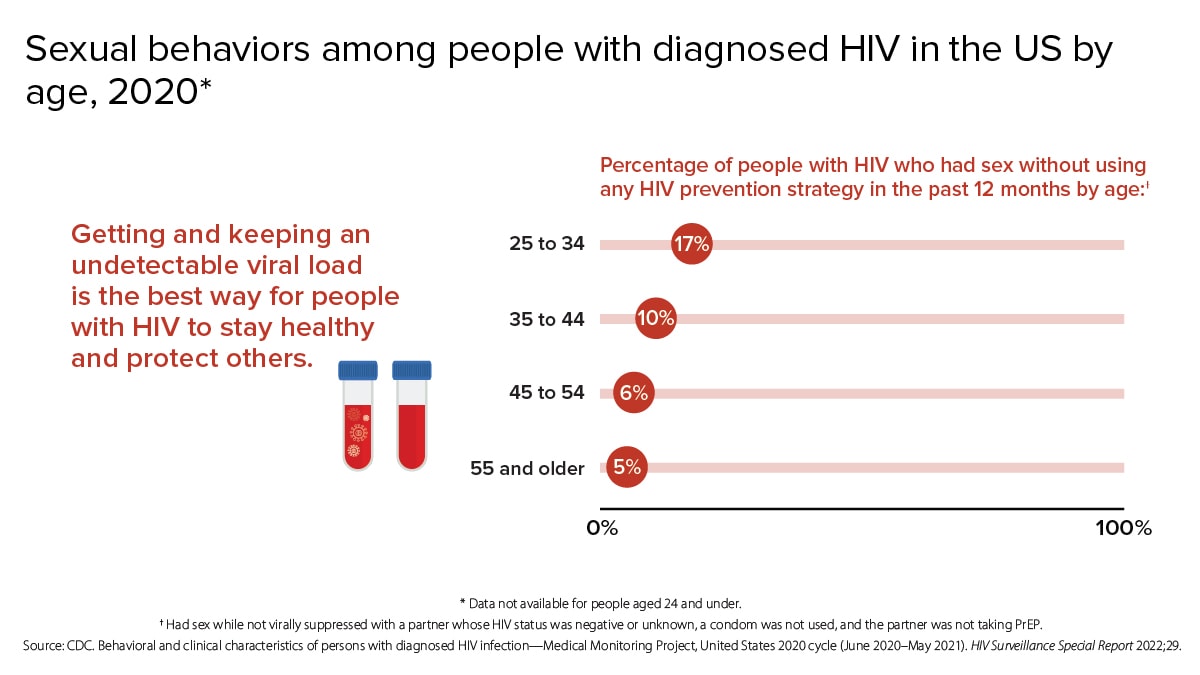
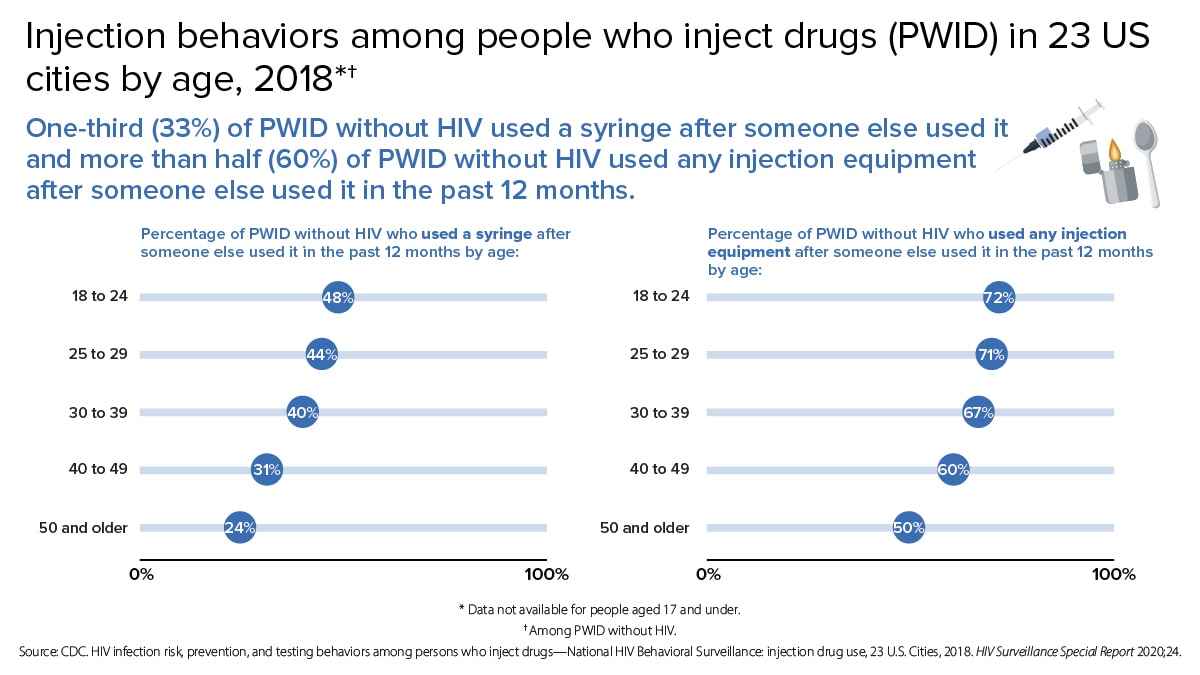
PrEP coverage
CDC has paused PrEP (pre-exposure prophylaxis) coverage reporting to determine the best methodology for calculating PrEP coverage, and to update PrEP coverage estimates using updated methods and sources. CDC plans to resume PrEP coverage reporting in the next HIV Monitoring Report for all demographic groups, currently scheduled for publication in June 2025. Until updated PrEP coverage estimates are published, CDC advises against citing specific PrEP coverage data points, as historical estimates will be updated.
Viral suppression and barriers to care
Viral suppression refers to the percentage of people with diagnosed HIV who have less than 200 copies of HIV per milliliter of blood.
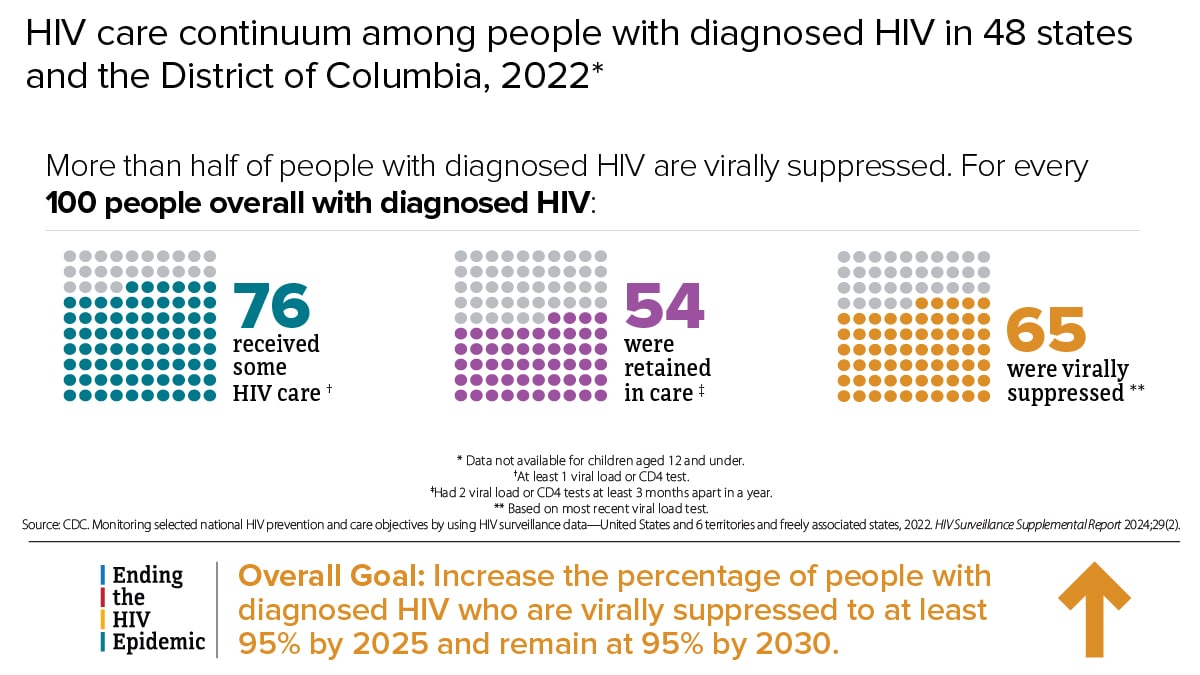
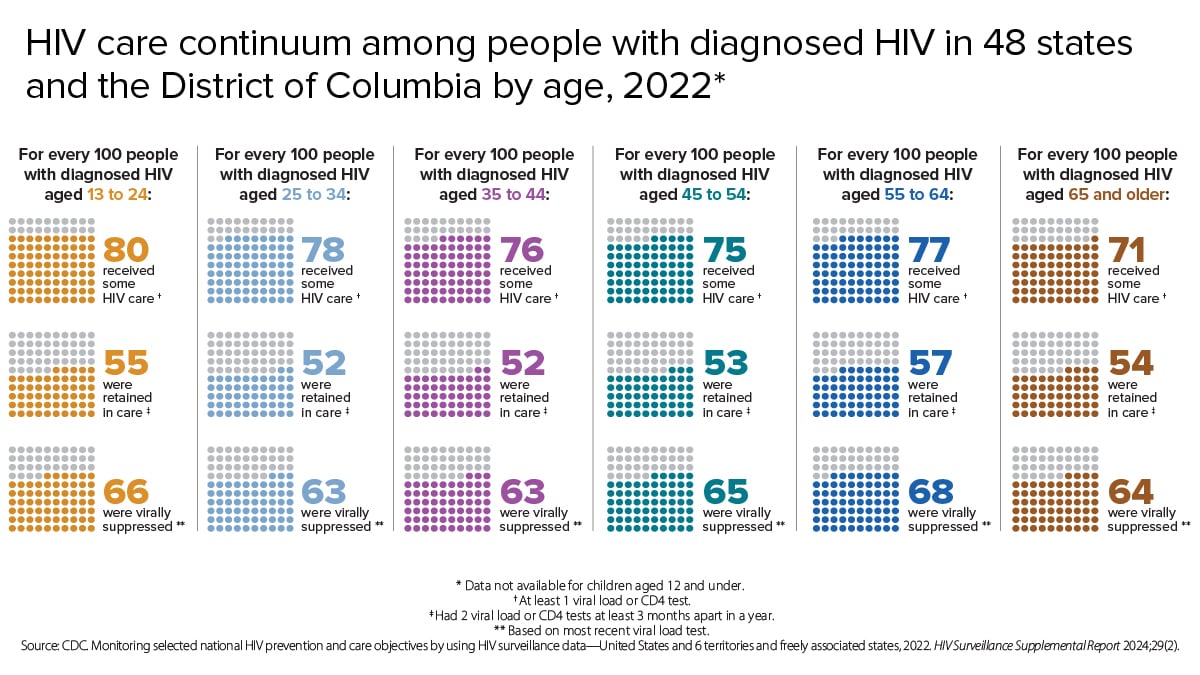
Many people with HIV experience challenges with achieving and maintaining viral suppression over time. Some of these challenges include missing HIV medical appointments, needing but not receiving other important health care services, or missing doses of HIV treatment.
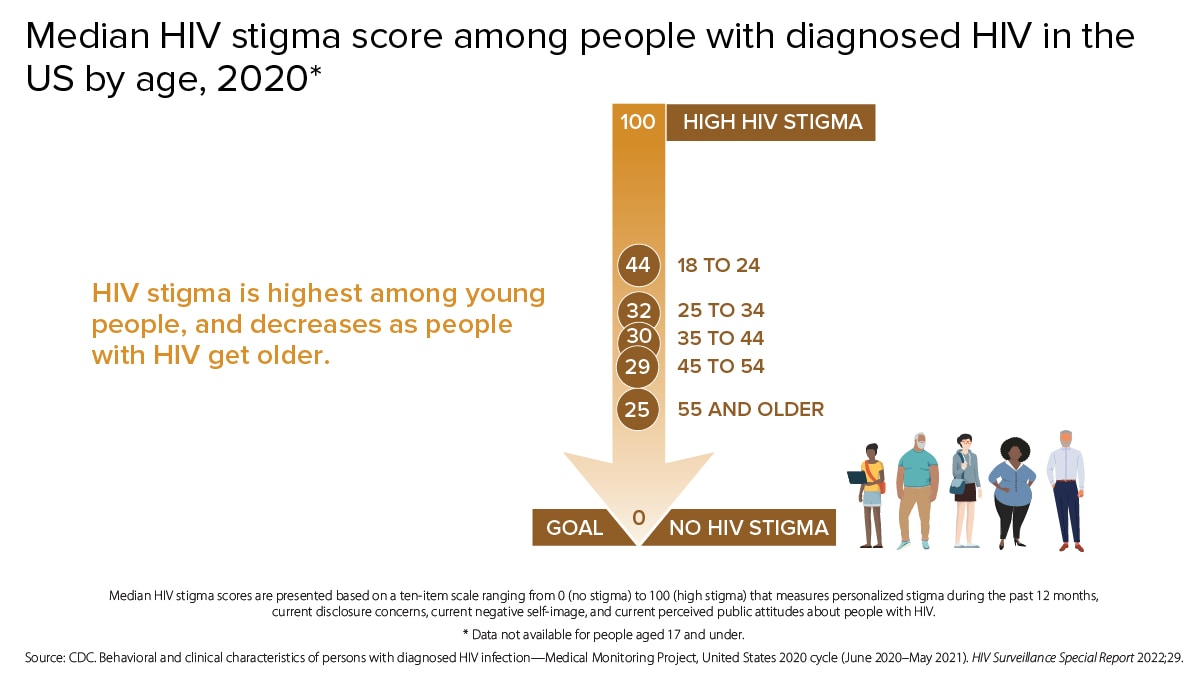
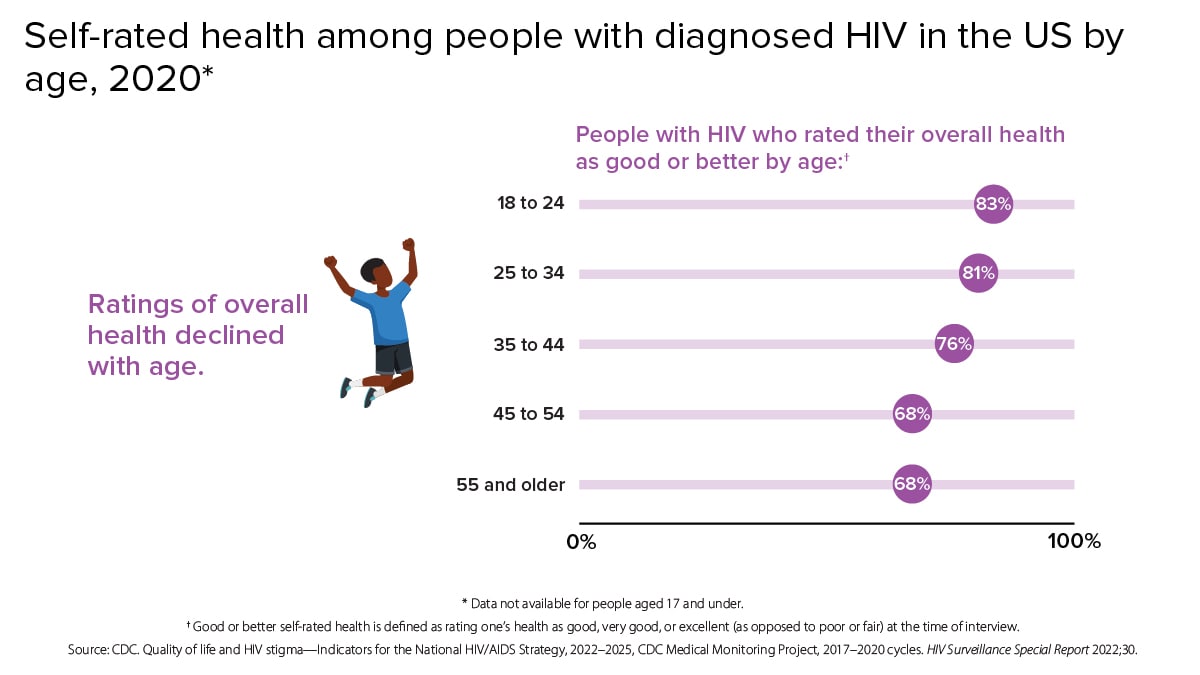
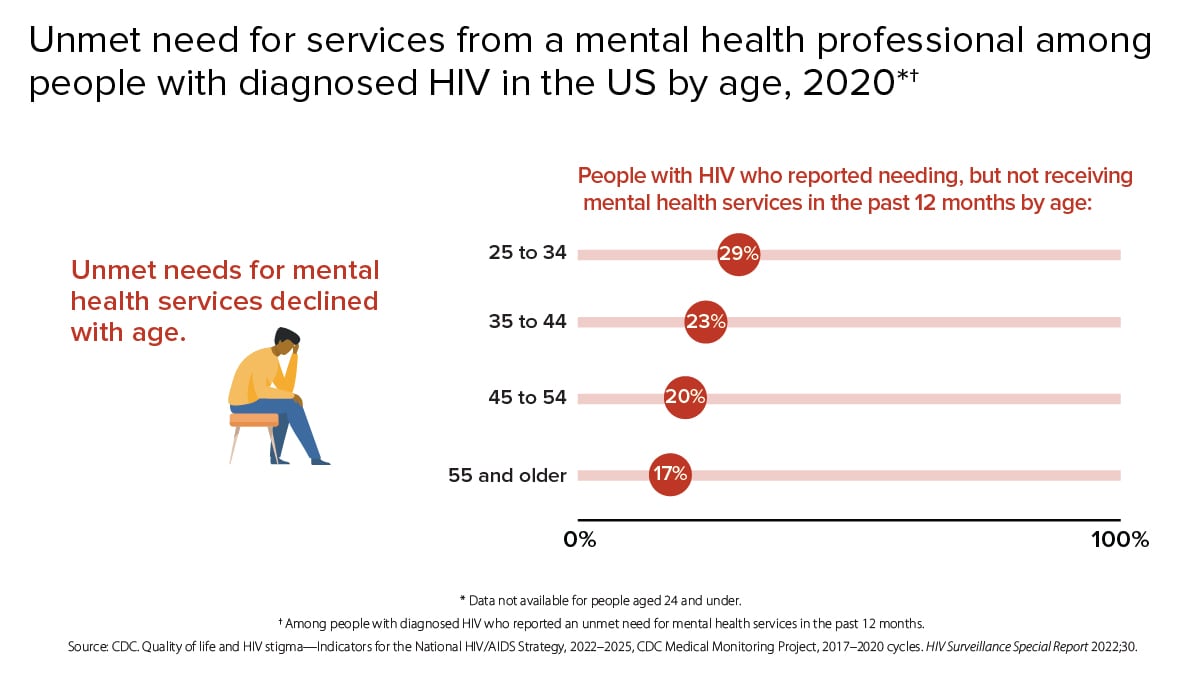

- CDC. Estimated HIV incidence and prevalence in the United States, 2018–2022. HIV Surveillance Supplemental Report, 2024; 29(1).
- CDC. Diagnoses, deaths, and prevalence of HIV in the United States and 6 territories and freely associated states, 2022. HIV Surveillance Report, 2024;35.
- CDC. Behavioral and clinical characteristics of persons with diagnosed HIV infection—Medical Monitoring Project, United States 2020 cycle (June 2020–May 2021). HIV Surveillance Special Report, 2022;29.
- CDC. HIV infection risk, prevention, and testing behaviors among persons who inject drugs—National HIV Behavioral Surveillance: injection drug use, 23 U.S. Cities, 2018. HIV Surveillance Special Report, 2020;24.
- CDC. Monitoring selected national HIV prevention and care objectives by using HIV surveillance data—United States and 6 territories and freely associated states, 2022. HIV Surveillance Supplemental Report, 2024;29(2).
- CDC. Quality of life and HIV stigma—Indicators for the National HIV/AIDS Strategy, 2022–2025, CDC Medical Monitoring Project, 2017–2020 cycles. HIV Surveillance Special Report, 2022;30.
